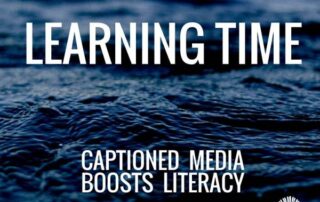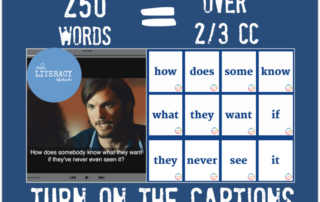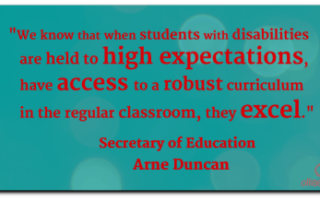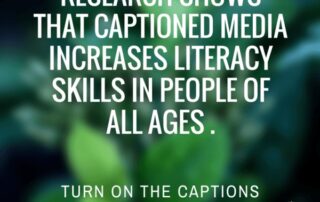The Impact of 250 Words on Literacy
Ollibean Literacy Lifehacks : Tools for parents and care providers without education backgrounds to easily provide literacy instruction. Sign up for our free Flashcards of the 250 Words that represent over two-thirds of captioned television.
250 Words Represent Over Two-Thirds of Captioned Television
"There are more than 500,000 words in the English language, but a person who masters only 250 words will recognize more than two-thirds of all words shown in television captions—provided the 250 words are those that are most frequently used. Equally dramatic, a beginning reader could be taught just 10 words—the, you, to, a, I, and, of, in, it, that—and then recognize more than one out of every five words. Mastery of the top 79 words means being able to read half of all words captioned." Source: Perspectives in Education and Deafness, Volume 16, Number 1, September/October 1997 Henry and
Students with Disabilities Excel with High Expectations, Access, and Inclusion
"We know that when students with disabilities are held to high expectations, have access to a robust curriculum in the regular classroom, they excel." Secretary of Education , Arne Duncan Until recently, the Department of Education's primary focus was evaluating states compliance meeting procedural requirements- timelines for evaluations, due process hearings and transition services. Under the new framework, Results-Driven Accountability (RDA), the Department will also include educational results and outcomes for students with disabilities in making each state’s annual determination under the Individuals with Disabilities Education Act (IDEA). “Every child, regardless of income, race, background, or disability can succeed if
How to Improve Literacy Without Even Trying
One of the simplest things you can do to improve your child’s reading skills is already in your home. Closed captioning is free, easy to use, and a natural literacy booster. Research shows that closed captioning increases literacy skills in people of all ages. Simply having the captions on can dramatically improve vocabulary, word recognition, comprehension, and reading . Closed Captioning supports literacy for all. by Lauri Swann Hunt Turn on the closed captioning in your home; on your tvs, ipads, phones, and computers. Many people think closed captions are only beneficial for deaf and hard of hearing people. And,
Dr. Caroline Musselwhite Shares Strategies to Promote Literacy for ALL
Dr. Caroline Musselwhite addresses the topic of overall good literacy instruction. She presents information about how to teach students with significant disabilities using fairly common literacy instruction strategies. There are 11 short video posts to help you get started. She discusses the issues of AAC and suggests strategies that are easy to implement and highly effective. Keep Calm and Watch On…





